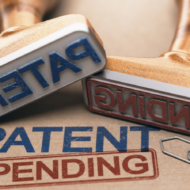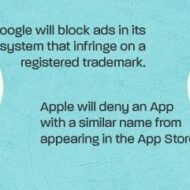Posted by Managementguru in Business Management, How To, Intellectual Property Rights, International Business, Marketing, Strategy, Technology
on Dec 14th, 2019 | 0 comments

How to File a Patent for Your Invention Inventors are highly prized in any market, since their work is often the focal point that other infrastructure, marketing, and production coalesce around. But as an inventor, whether in a startup or independently, it is important to make the most of any invention you create. This means protecting your original work legally. In this article, we look at one of the primary tools at the disposal of any inventor: the patent, and how to file one. Why File a Patent? Patents provide a level of economic security and market edge for their holders. They are specifically designed to incentivize invention and innovation, offering an avenue to significant potential profits for an invention that is patented quickly and correctly. Patents fall under the category of intellectual property (IP) law, and are one of four kinds of IP protection, the others being copyrights, trade secrets, and trademarks. Copyrights cover original creative work, trade secrets involve confidential information that benefits a company competitively, and trademarks protect branding and brand identity. However, patents may be the most powerful intellectual property tool. Holding a patent grants a twenty-year monopoly (in the United States) for the development, production, and sale of the invention in question. This means that no other companies can compete via imitation for this time period, allowing the best possible version of the invention to be produced and sold, gaining more profits by being a unique entity in the market. Filing a patent can make the difference between being swallowed by competitors who have the infrastructure to take your idea and produce it more cheaply or more quickly, and having the time and resources to perfect your invention and get rewarded for its genesis. Sure, the patent filing process is time consuming and costs money, but the potential benefits are immense. Is Your Invention Eligible? The United States Patent & Trademark Office, or USPTO, outlines what is and is not eligible for patenting according to the patent statute codified in federal law. Eligible areas include a process, machine, “article of manufacture” (manufactured product), composition of matter, or “improvement of any of the above,” as well as specific designations for unique plant patents and design patents that govern the nonfunctional design and aesthetic components of a product. So, if your invention happens to be a machine or a composition of matter, is it automatically eligible for a patent? In short, no. There are additional requirements that must be met for patent eligibility. These boil down to usefulness, novelty, and non-obviousness. To have any chance of being granted a patent, the invention in question must be useful. Usefulness here can be very broad and does not only encompass crucial or definitive needs and benefits. Things like entertainment and enjoyment can also qualify as uses. Novelty refers to being sufficiently unique and new in order to deserve a patent. This can often be an issue of contention, with gray areas existing between what constitutes a slight tweak or variation upon an existing idea versus a truly novel improvement. Lastly, being non-obvious may seem quite easy, but this determination usually helps to weed out inventions that are not really inventions but obvious combinations of previously existing factors. Before delving into the patent search and filing process, it may be a good idea to seek out a qualified patent attorney or law firm to determine what the best course of action is, as a professional will better know how your invention might fare. Picture Courtesy: Taylorip The Patent Search Now that you’ve determined your invention may be patent eligible, it’s time to hone in on the...

Posted by Managementguru in How To, Intellectual Property Rights, Startups
on Jan 18th, 2018 | 0 comments

Why Trademark Your Startup? Trademarking is very essential to new businesses, but first time entrepreneurs are not adept with the nuances of securing a trademark and often do not realize how vulnerable they are when operating a business without one. Why Trademark Your Startup? It helps protect your business identity It protects against others using the same or similar business name or logo It provides solid proof of your legally protected rights Federal trademark registration rights extend nationwide A trademark registration is an asset (it may be licensed or sold). Registering company names and domain names alone does not provide trademark protection. Must-Know IP Law (Patent, Trademark and Copyright) Beware of mimicking a famous brand; most popular iconic brands such as Coke, McDonald’s and Pepsi are protected by the Trademark Dilution Revision Act. Search Google to see if your intended trademark already exists. Reasons why your trademark may be rejected If it is likely to cause confusion, mistakes or deception with a mark already registered If it simply contains a generic name If it primarily describes or deceptive about the geographic origins of goods and services If it is primarily merely a surname If it is deemed immoral, deceptive or scandalous If it falsely suggests a connection with people, institutions, beliefs or national symbols If it uses the portrait, name or signature of any living person without the approval of the person concerned The Federal Trademark Registration Process 1. Select your trademark 2. Hire a Trademark Attorney Registering a trademark is a LEGAL process with many potential trap doors. Hence, it is advised to hire a trademark attorney to guide you through the trademark search and application process. 3. Availability Search Doing a search by yourself may prove to be disastrous. It is likely you are not familiar with what could create a conflict. A trademark search must be comprehensive and complete to rule out any potential legal conflicts. Doing an inadequate research is a major reason many trademark applications are rejected by the government. Do I Need a Lawyer to Register My Trademark? 4. Application Your attorney will draft and file your application with the USPTO (IN USA) OR THE TRADE MARKS REGISTRY (IN INDIA). If approved you will receive a trademark registration certificate and if refused, you will receive a refusal notice. 5. Monitor and Protect It is your responsibility to monitor and enforce your trademark rights. Failure to monitor can cause complete loss of trademark rights (regardless of having federal registration). COPYRIGHT ...




